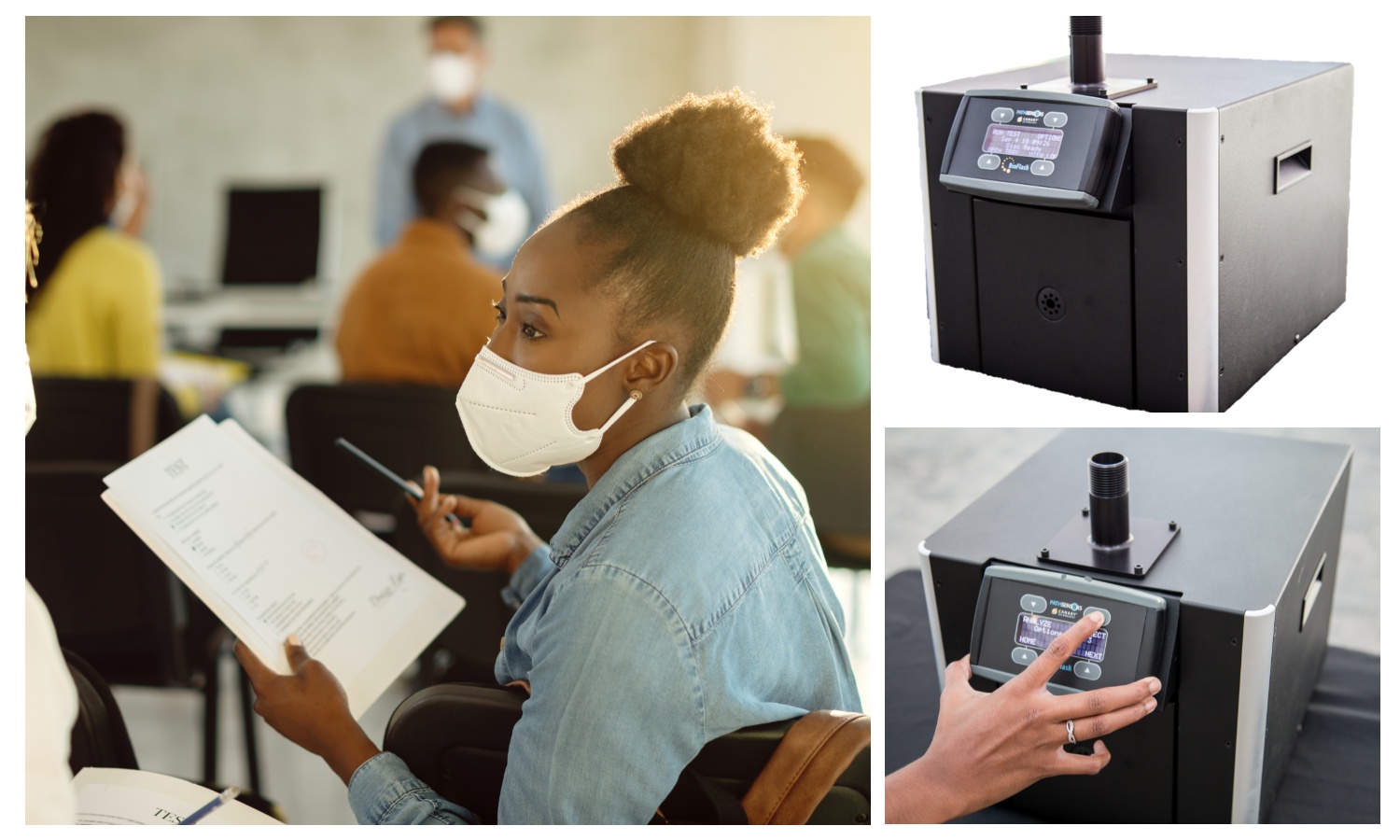The threat of COVID-19, and the ongoing opening up of our society, has made its biological detection a critical health and security need
There has never been a greater need for dynamic, practical, high speed, and highly sensitive pathogen detection. Technologies are available today which make real-time detection of viruses, toxins and bacteria possible, providing timely information and confidence in the decision-making needed to protect employees, rule out false-alarms, and allow places to reopen and stay open safely. We need to harness the use of this technology to rebuild people’s confidence and to allow places of learning to flourish once again.
The COVID-19 pandemic has had a huge impact across the world and many different industries. At the forefront, education has been severely impacted. Campuses have faced many difficulties in the past 18 months implementing enforced social distancing measures with large numbers of people, the multi-use of learning environments, physical activity and socialising, and managing COVID-19 infection spikes, to name but a few. Current testing measures, such as PCR tests, are an excellent weapon we have at our disposal for tracking the virus, however, there are issues with picking up asymptomatic carriers, as well as the necessary time delay to receiving results. Technology can help play a role in enhancing other COVID-19 defence measures.
A biosensor is a biological detection system that consists of a biological component combined with a transducer to perform the measurement of a biochemical quantity. Biosensor technology has been utilised for many years but has been focused on biothreats that have been released intentionally. Smiths Detection offers a portable and accurate detection method, the BioFlash, and one that can be used to detect non-malicious threats, i.e. asymptomatic individuals mingling with others. Smiths Detection has been developing biosensors for the past 15 years using a technology developed and licensed from MIT called CANARY. Smiths Detection’s product consists of a patented biosensor technology that can perform specific identification of biological agents and an instrument to interpret and report those results, taking in high sample volumes in short periods of time. Last year, we advanced the technology to detect airborne SARS-CoV-2, confirmed with testing by the United States Army Medical Research Institute of Infectious Diseases and University of Oregon. Biosensor capabilities allow for both indoor and outdoor applications, so air quality can be tested quickly. Using biosensor technology to detect airborne COVID-19 particles has a critical role to play in the opening up and safe use of large shared campus spaces, such as auditoriums.
Biosensors are being deployed and utilised around the world in a range of different formats. More recently Smiths Detection began a collaborative pilot project with the University of Maryland Baltimore County, to offer onsite testing capability for real-world use, aiming to help their Environmental Safety and Health (ESH) team with COVID-19 mitigation strategies on campus. One early testing success came when a student working in a research facility tested positive for COVID-19 on a diagnostic test. The ESH team used the BioFlash to test the facility’s air in three locations and received no positive result, confirming the space was safe to re-enter for students and staff, who could be comfortable in the knowledge that the area was COVID-free. Separately, in a collaborative effort with the Sports Medicine Department, an aerosol test conducted in a locker room following a team’s practice resulted in a positive detection on the BioFlash. As the result of the positive environmental test, UMBC was immediately able to have the team and staff tested for COVID and found three individuals were positive for COVID. These two real-world applications of the BioFlash demonstrate how the system can be used to both confirm the safety of a site and to help mitigate the spread of the virus. In this case, the COVID-positive individuals were able to be immediately identified and assisted, preventing further potential transmissions among the team and staff and at the team’s future athletic competitions. The BioFlash technology allows for onsite confirmation of these results in under three minutes with very low false alarm rates.
As with any piece of technology, biosensors will continue to develop and adapt, and we are already witnessing it. Biosensors will become smaller, cheaper, lighter to be utilised for handheld deployment in the future, allowing for rapid testing of classrooms in between classes, or the testing of individuals and groups ahead of larger gatherings. They will develop to take in samples from bigger spaces and in different environments and weather conditions. Specifically, to COVID-19, biosensors have already evolved in line with the virus, ensuring new variants are recognised and processed. Fixed biosensors could also become commonplace in specific campus areas to ensure a safe environment for all users.
We want to offer technological solutions to be part of the overall COVID-19 mitigation strategy and for people to feel safe in any environment. Technology is available to empower campuses, and other places of work and leisure, to support and enhance their mitigations strategies in a cost effective and efficient way. The more quickly we can deploy complementary virus mitigation techniques, the quicker we can get back to normal life.
For more information visit http://www.smithsdetection.com/


